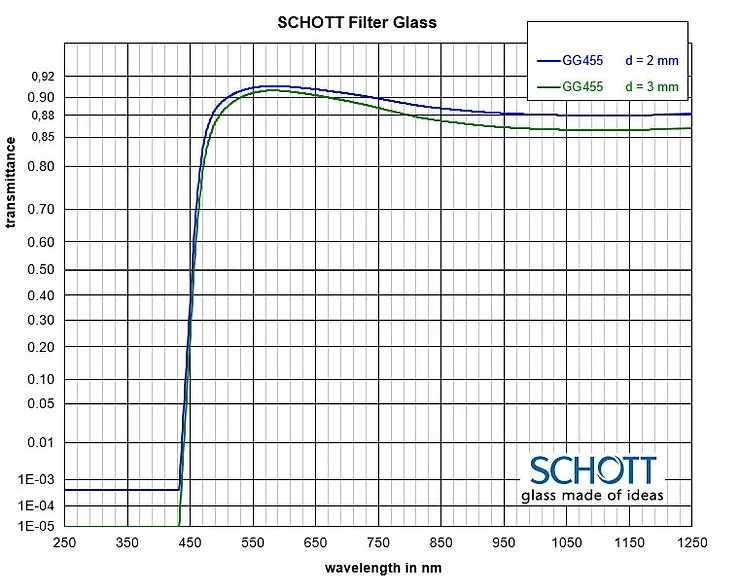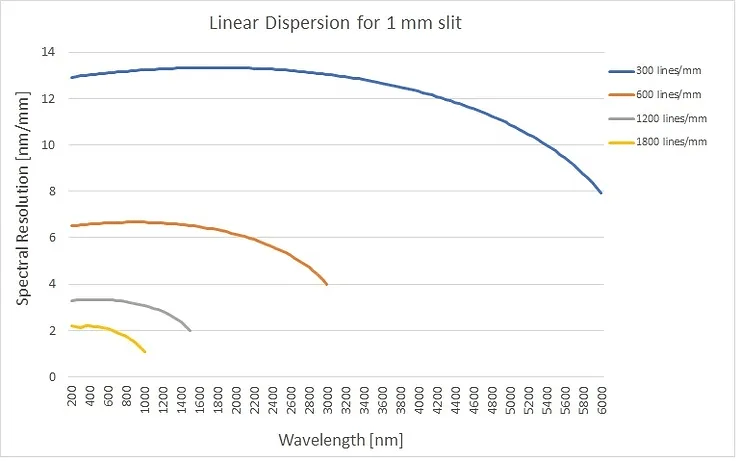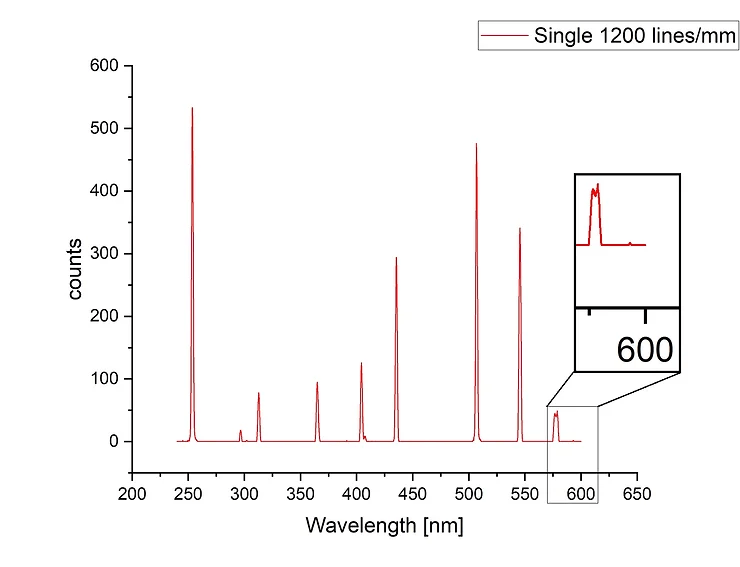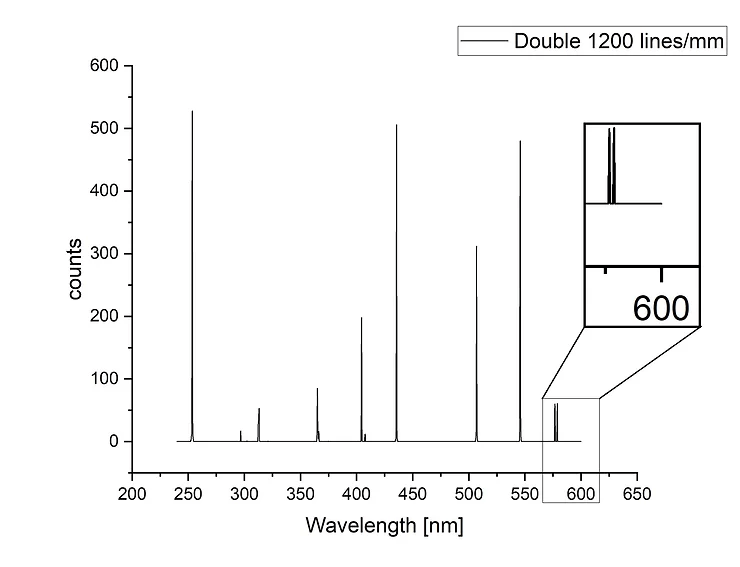No spectral filter is perfect and there is always an amount of light from outside the desired bandwidth that passes through it.
Second order longpass filters made of SCHOTT color glass are very efficient at filtering out wavlengths below a certain threshold, if used with a thickness of at least 3mm. However, they are only available as longpass or bandpass with long slopes around the designed wavelength.

Advancements in technology of coatings led to the development of bandpass filters with the full width at half maximum (FWHM) as narrow as 1nm. However, commercially available are only filters for a few characteristic spectral lines.
Hence, in order to perform spectroscopic measurements over broad spectrum, monchromators are essential. The resolution of a monochromator is determined by linear dispersion

which in the first order depends on following parameters of the monochromator:
- Slit width expressed in mm
- Grating groove density d is expressed in spacing between grooves.
- Focal length f of mirrors in Czerny-Turner optical system
- Grating scanning angle ∅ which determins the selected wavelength
Linear dispersion is typically expressed in nm of spectrum per 1 mm of slit opening [nm/mm]. In the case of MO 250 monochromator at 500nm it is:
- For a grating with 300 grooves/mm 13,1 nm/mm
- For a grating with 600 grooves/mm 6,6 nm/mm
- For a grating with 1200 grooves/mm 3,3 nm/mm
- For a grating with 1800 grooves/mm 2,1 nm/mm
The plot below shows linear dispersion in the full scanning range with the grating rotation angle of up to 70 degrees :

However, values calculated above are only theoretical. In practice the spectral resolution of a monochromator is deteriorated by stray light. Stray light is light that passes through the exit slit but is from outside the selected spectral range. It occurs in every single monochromator despite the presence of specialized baffles and light traps. The most effective way to reduce stray light is to use double monochromator consisting of two MO250 monochromators connected through intermediate slit. In case of a well aligned setup stray light can be controlled by the opening of intermediate slit. The improvement of using a double monochromator to resolve emission peaks of a low pressure mercury lamp is demonstrated below.

